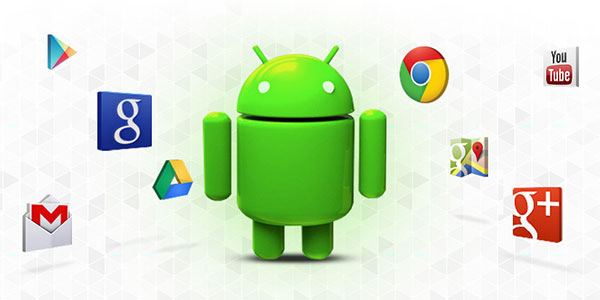Google announced support for a range of new Android tools for application developers, chief among them the creation of a new support category for foldable devices, at last week’s Developers Summit.
After years of teasing and speculation, it finally looks as though foldable screen smartphones are headed to market. Google’s dev announcement followed closely on the heels of Samsung’s announcement at its own developer conference of a folding phone/tablet prototype with Infinity Flex Display.
The Android tools will take advantage of the new display technology, which literally bends and folds, noted Stephanie Cuthbertson, director of product management at Google. The technology is based on two variations of screen design: two-screen devices and one-screen devices.
Either way, the new devices will look like phones when folded, so they will fit into a pocket or purse. When unfolded, they will display screen continuity seamlessly. For example, as the device unfolds with an active image already in use, the image will transfer to the bigger screen without flutters or distortions.
“Official support from the Android development team means that folding phones are being taken seriously as a new type of device,” said Brandon Ackroyd, head of customer insight at Tiger Mobiles.
Marketability Unknown
Consumer interest in owning foldable devices is still an unknown factor. It might turn out that if they build them, no one will come.
While Google’s new developer support augurs well for Samsung and other manufacturers working on foldable devices, Ackroyd does not think it means foldable phones are going to be the must-have product of the future.
“Right now, I don’t see the use case or any apparent advantages,” he told LinuxInsider. “What I do see, however, is a proof-of-concept of this type of foldable screen technology, and I think we’re going to see many different products make use of this soon. Perhaps [it will become] the next-generation type wearable that fully wraps around your wrist.”
Foldable mobile devices are not guaranteed to be successful as the technology transitions from concept to reality, observed Charles King, principal analyst at Pund-IT.
“In many ways, smartphone users are the world’s largest community of lab rats, in the sense that so many are willing to follow wherever handset makers lead in terms of new features and functions,” he told LinuxInsider.
It was not so long ago that oversized smartphones made by a few adventuresome vendors were dismissively called “phablets,” he recalled, but today, larger form factors dominate the high end of the market.
Foldables could catch on among consumers who are tired of lugging around phones that resemble paperback books. Those consumers still want large displays for media consumption.
“It will be interesting to see whether that happens, or if buyers simply stick with the designs they know,” said King.
Flexible Future
Given the resources that are available today, manufacturers have a good shot at making foldable screen devices appealing to consumers, suggested Rob Webber, CEO of MoneySavingPro.
Futuristic-looking foldable smartphones have always been a dream concept, he noted.
“Smartphones have evolved dramatically since they were first invented, especially their displays,” Webber told LinuxInsider, recalling the stylus input before Apple introduced touchscreens that were able to react to the electrical impulses generated by the user’s fingers.
“Now we’re at a stage where edge-to-edge displays are the norm. Some could say that foldable displays are just the next rung on the ladder,” he said.
However, it’s unlikely the new technology will be a simple transition, Webber added. It will face many obstacles before the technology advances. The key to the foldable mobile device being a success is hardware and software integration, which will take time for manufacturers to perfect.
Cost also might be an issue. With the continually rising prices of new smartphones, if foldable devices are going to cost significantly more, they may appeal only to a very niche market, Webber reasoned.
“Having said that, I think we are currently at an exciting stage that marks the beginning of an emerging battle between manufacturers and the start of a very flexible future,” he said.
Potential Exploit and Failure
Money may not be the only cost factor consumers will face if foldable screens catch on. Smaller yet expanding devices may be more appealing to hackers than to consumers, warned Mike Banic, vice president of marketing at Vectra.
The number of Web searches performed on a mobile device has been increasing steadily. New mobile technology that makes it easier to use mobile devices to create as well as consume information means that attackers will exploit the trend, he told LinuxInsider.
Additionally, the number of mobile vulnerabilities is highest on Android apps, largely due to its open source nature and the questionable security of third-party app stores, Banic said.
“Mechanicals could introduce a point of failure that may cause adoption to stumble,” he noted.
Google Dev Support Wrapup
Google’s plan to bring more Android tools to app developers is part of an ongoing program. The Dev Summit announcements suggest the company has decided to take an aggressive approach.
The new features will be rolled out to a number of developers who are considered “partners.” Availability then will expand further to devs before they eventually become accessible to all.
“It is a solid group of announcements that most Android developers will welcome,” said Pund-IT’s King. “At a time when smartphone market growth appears to have stalled, introducing support for new features and form factors could offer Android device makers what they need to make their products stand out from the crowd and attract customer interest.”
- Updates to Kotlin Programming Language
Kotlin is not a Google-developed language, but it is one that devs have favored. Last week, JetBrains released the latest version of Kotlin, 1.3, which brings new language features, APIs, bug fixes and performance improvements.
It has become the fastest-growing language, in terms of the number of contributors on GitHub, and has been voted the second most-loved language on Stack Overflow.
In Google’s surveys, the more developers use Kotlin, the higher their satisfaction, according to Google’s Cuthbertson.
- Android Jetpack
Google announced new Jetpack libraries, the next generation of tools and Android APIs to accelerate Android application development. It contains two new Architecture Component libraries: Navigation and Work Manager, that will move to Beta this month.
The Navigation Architecture Component offers a simplified way to implement Android’s navigation principles in an application. Plus, the new Navigation Editor in Android Studio creates and edits navigation architecture.
This eliminates navigation boilerplate while adding atomic navigation operations with easier animated transitions and more. WorkManager makes it easy to perform background tasks in the most efficient manner, choosing the most appropriate solution based on the application state and device API level.
- Slices
Google moves Android Slices to public Search experiments. Slices is a new way to bring users to an app. It works like a mini snippet of an app that surfaces content and actions.
“Aside from the foldable announcement, the most interesting angle was the further development of Google Slices. This new concept allows Android apps to push relevant components and features of their apps into other places, such as the Google Search,” said Tiger Mobiles’ Ackroyd.
By loading a small part of an app right from the search results, users can get a near-native app experience without actually fully opening the app, he said. For example, if you google ‘What is the Tesla stock price?’ and you have a stocks app installed, that app can use a ‘slice’ to give you the info.
Google announced the concept of Slices with Android 9 Pie. This new paradigm allows apps to surface relevant components and features in natural places, like Google Search.
This month, Google will make Slices available as part of a public Early Access Program with partners. Google also will begin experiments in the Search app to surface various Slices when relevant.
- Android Studio
Android Studio, Google’s official IDE for Android development, has a new focus on productivity, build speed, quality and fundamentals.
Google launched Android Studio 3.3 beta 3 last week. Upcoming releases will add a strong focus on quality and fundamentals. Google also announced the development of Android Studio on Chrome OS early next year.
- Android App Bundles and Dynamic Features
The Android App Bundle is the new publishing format that serves only the code and resources users need to run an app on their specific devices. It will reduce app sizes with an average of 35-40 percent savings compared to a universal APK.
The app bundle now supports uncompressed native libraries. With no additional developer work needed, the app bundle now makes apps using native libraries an average of 8 percent smaller to download and 16 percent smaller on disk on M+ devices.
- In-app Updates API
Google is giving devs more controls to ensure that users run the latest and greatest version of their apps. In-app Updates API will give devs two options.
The first is a full-screen experience for critical updates when you expect the user to want the update to be applied immediately.
The second option is a flexible update. It lets users continue with the existing installed version while the update is downloaded. The developer can use it to ensure that users have the most up-to-date version, because the app can be pushed to install in the background using the automatic updates feature.
- Instant Discovery
Google hopes to make instant apps easier to adopt. The company recently made the use of Web URLs optional, so devs can send their existing Play Store deep link traffic to their instant experience if it is available.
Also, Google raised the instant app size limit to 10 MB for the Try Now button on the Play Store and Web banners for greater adoption ease.























































